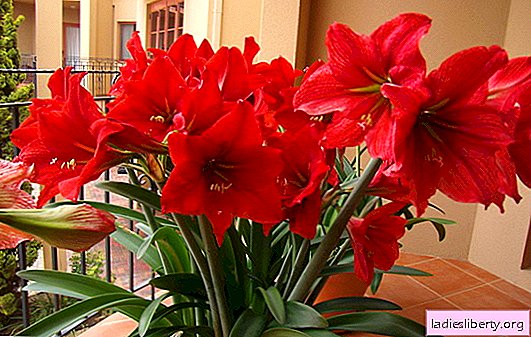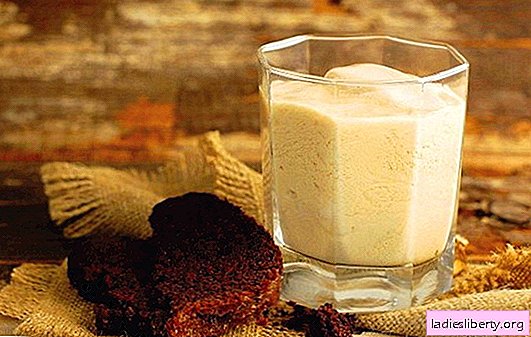
Kind Medunits (Pulmonaria) from the Boraginaceae family includes from 14 to 16 species of perennial herbaceous plants, whose homeland is the Eurasian continent. Almost all varieties of honeynip that exist today are descended from several species: an obscure lunatic (Pulmonaria obscura), sugar or spotted lunar (P. saccharata), narrow-leaved larun (P. angustifolia), Dacian lungwort (P. dacica), or softest (P. mollissima), Lungwort officinalis (P. officinalis), Lungwort red (P. rubra). Every year, the collection of Lungworms is replenished with new varieties.
The advantage of Lungwort compared to other plants used in decorative floriculture is its exceptional shade tolerance, as well as a long growing season with preservation of decorative properties and high frost resistance. Lungwort begins to bloom when there are no leaves on the trees, and is a real find for early spring compositions. In addition, it is a long-lasting plant, the life of one of its bush can reach 30 years.
A valuable plant is considered medicinal Lungwort (Pulmonaria offici-nalis), which is listed in the Red Book.
Lungwort - growing and care
For the medunica, you need to choose semi-shaded or shaded cool areas, since it does not tolerate heat. Only in the shade can the pattern that adorn the green leaves of the Lungwort, as well as the saturated color of their flowers, be fully manifested.
There are no special requirements to the soils on which these plants are planned to be grown, since the honeyfish is very unpretentious and grows in almost any soil. For example, even poor sandy soils are suitable for narrow-leaved larunas. However, ideally, they should be loamy or loamy, alkaline or slightly acidic, necessarily loose, containing humus. For better growth and development of plants, it is recommended to regularly introduce humus and feed them. For feeding bucket, 1 feeding per season is sufficient, in the middle of summer (approximately in July), when new leaves grow intensively in the plant. To do this, use a solution of complete mineral fertilizer (from 15 g. To 20 g. Per 10 liters of water).
Lungworms are relatively moisture-loving plants, so in dry weather they need to be provided with regular watering. However, they also do not tolerate moisture stagnation, so it is important to choose the optimal irrigation regime.
For the Lungwort, Lungwort, and Lungwort red, it is necessary to allocate more space, because of their “creep” property. For the Lungwort narrow-leaved, clipping of leaves is unacceptable. After the last flower of the medunica withers, it is necessary to completely cut off (but not break off) the peduncle, so that there is not even a hemp left. It is also important to remove old leaves during the flowering period.
If necessary, you need to chop off the overgrown shoots with a shovel. Preparation for winter of such plant varieties and hybrids as the Lungwort and the Lungwort soft, should be covered with a good layer of leaves. All types of Lungwort need to be mulched with peat before wintering.
Lungwort - transplant and reproduction
Lungwort is propagated by seeds and shares.
The easiest way to reproduce Lungwort is vegetative. The best time for dividing the bushes is early spring, but you can do this even after the end of the flowering period, in July-August. To do this, divide the bush and plant delenki with the renewal bud in the ground, at a distance of 25-35 cm from each other. Before planting, it is recommended to prune the roots of the plant, and after it, mulch the earth around the young plants with humus and cover the planting with plastic wrap in order to reduce the evaporation of moisture.
However, bushes should not be shared too often. In nature, vegetative propagation occurs naturally, after the transition to flowering. This process accompanies almost the entire growth period, when the old sections of the rhizome die over time and the bush decays.
Division of the bush is the only way to keep the variety clean, seed propagation practically does not give such an opportunity. But with the help of seeds, you can experiment with the coloring of plants, getting a whole gamut of colors. After planting seeds in the soil, the plant blooms only after 2-3 years.
Interestingly, the Lungwort is a representative of myrmecochores (plants whose seeds are distributed by ants). Therefore, you can sometimes meet with its seedlings in the most unexpected places.
Lungwort - diseases and pests
In general, the honeyfish is a plant resistant to the effects of diseases and pests, however, it can be affected by powdery mildew in cold and humid years. In this case, the affected plants must be removed and burned, and the rest treated with sulfur preparations.
Of the most common pests of Lungwort are slugs that eat around its leaves. They are fought mainly by agricultural methods, avoiding planting thickening, carefully cultivating the soil and cleaning it of weeds so as not to create a suitable microclimate for slugs for their development.
Thus, planting a Lungwort in your area, you will enrich your flower garden with a beautiful hardy plant that will please you for a long time, without requiring you to spend a lot of time and effort.











